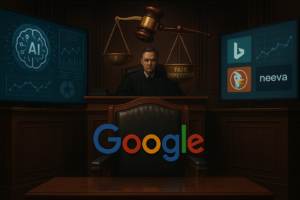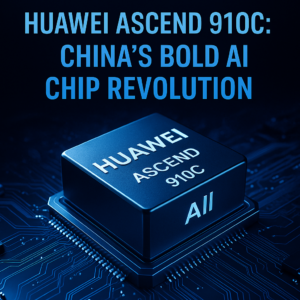Balancing AI and Human Talent: Insights from the Recent Videogame Performers’ Union Agreement
Summary: In a landmark agreement following an extensive strike, the Videogame Performers’ Union has secured new terms with 80 games that emphasize the protection of human creativity against the backdrop of advancing artificial intelligence. This article delves into the implications of the agreement, including the safeguarding of performers’ rights and the industry’s evolving relationship with AI.
The world of video games is not just about pixels and code; it’s a realm where human creativity meets technological innovation. Recently, the Videogame Performers’ Union made headlines with a significant agreement covering 80 video game projects, marking a pivotal moment in the ongoing discourse about artificial intelligence (AI) and its impact on the industry. This agreement, reached after a month-long strike, emphasizes the importance of preserving human artistry amid the rise of AI technologies that could otherwise diminish the role of performers.
The new interim agreements ensure:
- Enhanced wage structures
- Protections against exploitative uses of AI
- Safety measures for performers engaged in physically demanding roles
These provisions acknowledge the unique contributions of voice actors and motion capture artists, who bring characters to life in ways that AI alone cannot replicate. Duncan Crabtree-Ireland, SAG-AFTRA’s national executive director, highlighted that these agreements affirm the value of human ingenuity in interactive storytelling, reinforcing the notion that AI should complement rather than replace the human element in gaming.
Despite the achievement with these 80 projects, the union’s strike against major publishers such as Disney, Warner Bros., and Electronic Arts continues. The ongoing negotiations underscore the crucial need for comprehensive AI regulations that protect all performers. The union’s efforts focus on eliminating loopholes that could allow companies to exploit performers’ likenesses without appropriate consent or compensation.
AI’s role in the gaming industry has become a double-edged sword. On one hand, AI offers unprecedented opportunities for enhancing game design and player experiences through personalized interactions and learning algorithms. On the other hand, there are legitimate concerns regarding the potential for AI to undermine the livelihoods of talented performers. As AI-generated content becomes more sophisticated, it raises questions about the future role of human performers in an industry increasingly reliant on artificial intelligence.
The recent agreements represent a proactive step toward establishing a framework where both human talent and AI can coexist harmoniously. By securing protections that address the specific concerns of performers, the union is advocating for a balanced approach to technology in gaming. This balance is essential not only for the wellbeing of the performers but also for the integrity of the creative processes that define the industry.
As the gaming landscape continues to evolve, the conversation about AI’s impact will only intensify. The outcome of ongoing negotiations with major publishers will likely set a precedent for how the industry navigates the intersection of technology and human artistry. The Videogame Performers’ Union’s recent agreements serve as a testament to the power of collective bargaining in shaping a future where human creativity remains at the forefront of gaming, even as AI continues to advance.
In conclusion, the latest developments reflect a critical moment for the gaming industry. As we embrace the potential of AI, it is vital to ensure that the voices and contributions of human performers are not only recognized but also protected in this rapidly changing environment. The balance between AI and human creativity is not just a necessity for the industry; it is a fundamental aspect of what makes video games a unique and engaging form of entertainment.


